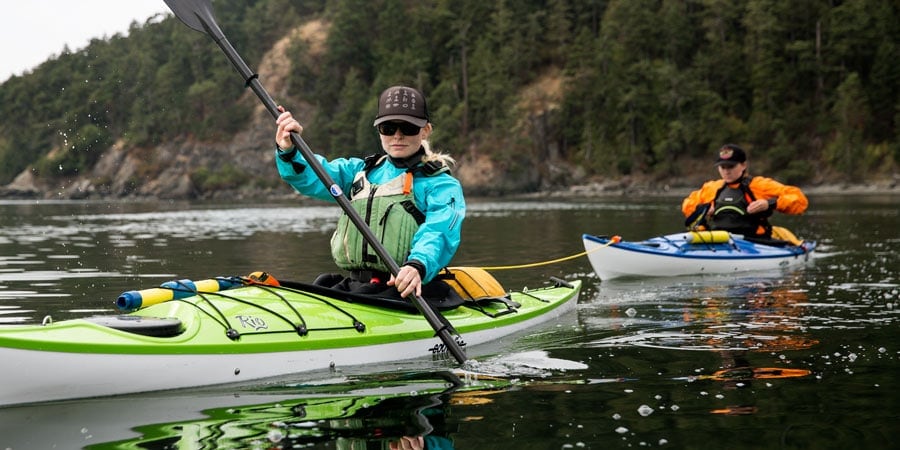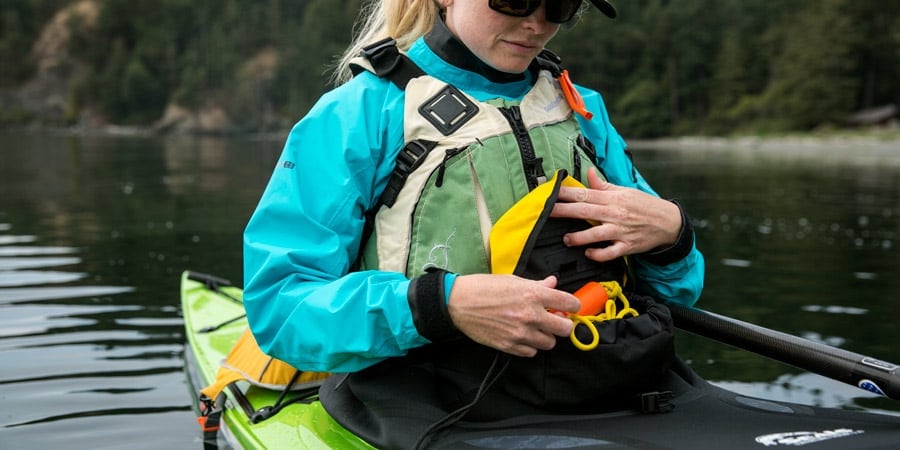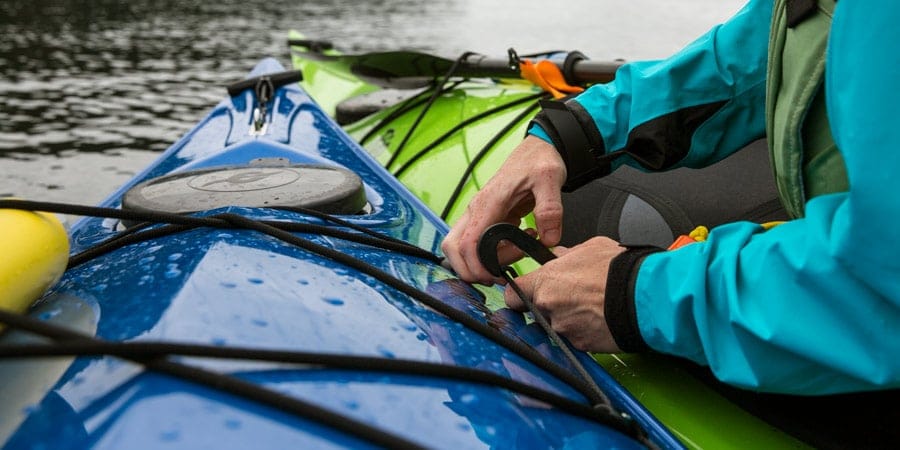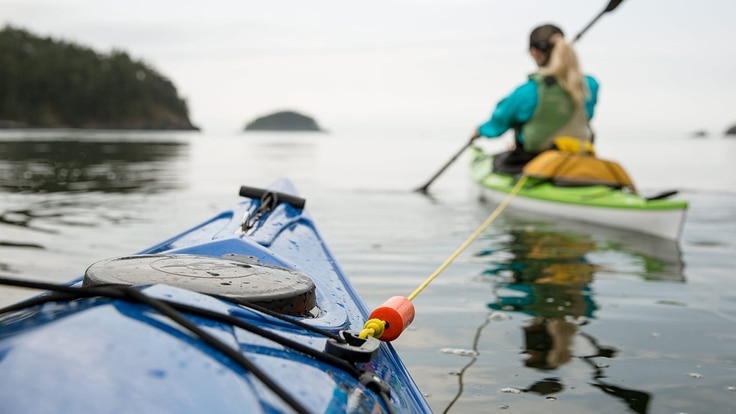Kayaking with a friend is always a good idea. You'll each be a better paddling buddy, though, if you know how to tow your partner in case they're in trouble for any reason. That's why it's important for you to bring towing gear—and the knowhow to use it—on every trip.
There are various types of towing setups you can use, such as a towline mounted on your deck or PFD, as well as a waist-worn tow belt. In this article, we'll focus on the tow belt because it's easy to access and use, and it positions the line optimally, anchoring low and centered on your torso for a stable tow.
This article will cover the basics:
- When a tow is needed
- What exactly a tow belt is
- How to use a tow belt in a typical scenario
Whether you use a tow belt, or any other type of towing setup, it's wise to learn towing and rescues from an experienced instructor, and to practice until it's second nature.
When a Tow Is Needed

The person who needs a hand might be someone in your group or a kayaker you encounter along the way. Whenever someone can't get to shore on their own, a tow is in order:
- If the person is physically or mentally spent and needs a tow assist.
- If they lack the skill to get through a rough patch of water.
- If they can't paddle because of an injury.
- If their paddle is lost or broken (and no spare is available).
A standard tow with a tow belt works for all of these situations. (We won't get into scenarios where special towing techniques are required, like an unconscious paddler or even a boatless paddler.)
The Tow Belt

A tow belt looks like a fanny pack and is made to wear just below your PFD. With a few variations, tow belts will have the following features:
- A quick-release buckle in front—in case you need to abandon the tow to prevent a capsize
- A wide opening on the pack itself—for speedy access
- A length of rope, coiled neatly inside, with one end attached to the pack
- A carabiner for clipping onto the other boat
Some will also include:
- A float to prevent the carabiner from sinking
- A bungee section to smooth out the tow
Look for waistbelt webbing that's 2 inches or wider so it won't dig into your midsection. A Velcro® closure on the pack is handy for quick access. Whatever belt you choose, spend time familiarizing yourself with its design and make sure the rope is neatly coiled.
How to Perform the Tow

Say you have a spent paddler, who needs a full tow or a tow assist to get home. The basic steps are these:
- Paddle to the other kayaker to explain how the tow will work.
This also lets you assess how they're doing and puts you in position to clip the towline to their boat. If they'll also be paddling, have them try to match your boat's direction. If they have a skeg, deploy it. If they have a rudder and know how to use it, let them. If they're too tired or hurt to paddle, have them try to sit upright and balanced. It's fine, too, if they paddle intermittently. Have them stop paddling if they ever get going fast enough to start catching up with you. - Undo the pack and pull out the carabiner end of the rope.
It's simplest to use the full rope (though there are techniques you can learn for shortening it—ropes longer than 40 feet can be cumbersome to use). - Clip the towline's carabiner to a static deck line at the front of their boat.
The front carry toggle or any solid anchor point (not a bungee line) will also work. Depending on their boat's setup, you might have to get creative. - Paddle forward until there's tension in the rope, then at a steady pace.
Practicing with a friend in calm conditions is good for both learning to tow and for building up your stroke power. Then practice on choppy water. It will prepare you for more real-world towing situations and give you a read on the upper limits of your ability. That will help you understand when it's wiser to call for help than it is to attempt a tow.



